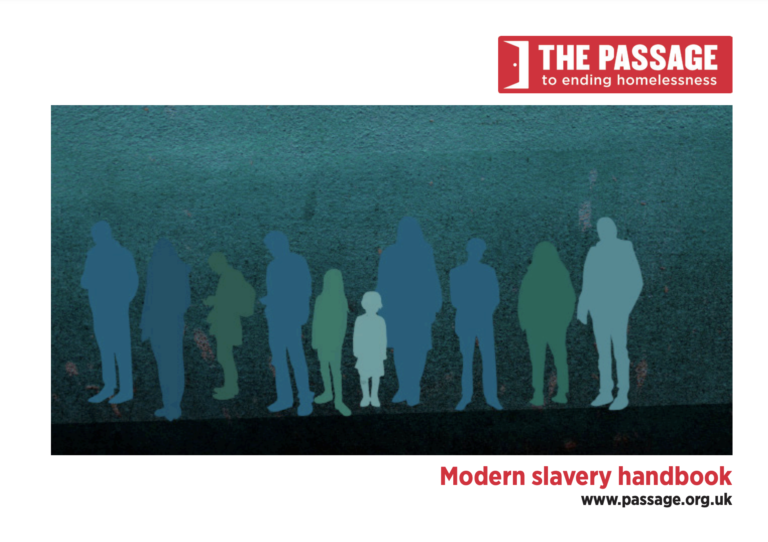Modern Slavery Handbook
We believe that everyone should read this handbook – and we have kept it small so that you can keep it in your work bag or desk drawer. This handbook was, however, specifically created for staff who work in the...
This handbook was specifically created for staff who work in the homelessness sector, particularly frontline workers, managers and volunteers. People who are engaged in support services for homeless people can be vital eyes and ears in detecting this crime. In addition, by identifying a survivor and engaging with First Responders, you are facilitating the person’s access to support, such as a recovery and reflection period of at least 45 days, safe accommodation and material assistance, legal advice, medical and psychological services, compensation and/or safe repatriation and return.
Use this handbook to understand the types of exploitation that homeless people are exposed to. By knowing what to look for, and how to get support, frontline workers can save lives.

We believe that everyone should read this handbook – and we have kept it small so that you can keep it in your work bag or desk drawer. This handbook was, however, specifically created for staff who work in the...
Our online lives are advancing constantly. The internet and rapidly evolving digital communication tools are bringing people everywhere closer together. Children are increasingly conversant with and dependent on these technologies, and the COVID-19 ...Read More
This guide contains practical steps and considerations for the responsible recruitment and supply of workers during Covid-19 for use by employers and labour providers/recruiters in global supply chains. Particularly relevant for essential sectors wh...Read More
This report is a first attempt to document child sexual exploitation in itsvarious manifestations. It provides evidence on the scale of the problemand on what works in preventing and responding to child sexualexploitation, and signals the areas wher...Read More
This briefing document synthesizes the key themes emerging from GFEMS-funded research and advocacy efforts focused on Vietnamese labor migration between 2018-2020. Findings represent inputs from a range of labor migration stakeholders including gove...Read More